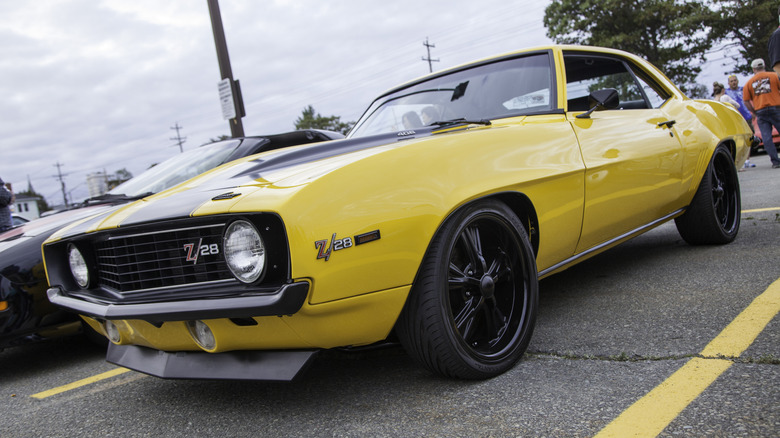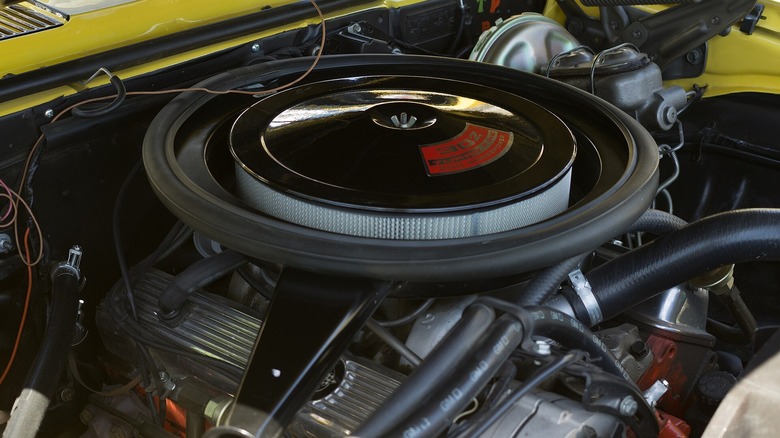Chevy 302 Engine Facts You Should Know As An Enthusiast
Among the many variations of the iconic small-block Chevy, the short-lived but ferocious 302 aka DZ302, stands out as a high-revving race-bred V8 built for one purpose: Trans-Am dominance. Introduced in 1967, the Chevy 302 has a story to it, like all the small block engines. To understand the 302, you need to know the details behind its creation. Firstly, the Chevy 302 was a parts-bin special, built solely to race in the SCCA Trans-Am series. The 305 cubic-inch limit meant the engine could not be bigger than 5.0 liters in capacity, so Chevy improvised. It was never meant to be a mass-produced workhorse motor like the legendary 350 SBC.
Interestingly, it featured an oversquare design, meaning the bore was bigger than the stroke. Being a parts-bin special, its crankshaft was lifted straight from a 283, giving it a 3-inch stroke, while the 4.0-inch bore was borrowed from a 327. The advantage of an oversquare design was that it was really rev-happy; it spun all the way to 7,000 rpm, making it a very capable racing engine that delivered smooth, linear power throughout the rev range.
In competition, the 302 made its mark early. Dave Strickler clinched the 1968 IHRA Super Stock world title in a Z/28 powered by the 302. On the road racing side, the Z/28 Camaro secured the Trans-Am Manufacturer's Championship in 1968 and 1969 for the above 2.0-liter class, with Mark Donohue driving for the Roger Penske team.
The rare Z/28 powerhouse
Besides racing, Chevrolet only offered the 302 engine in the Camaro Z/28 trim to complete the homologation requirement, making it rare and collectible. It was on sale from 1967 to 1969, with just over 28,000 Camaros built with the Z/28 trim, making it one of the rarer Camaros. Moreover, they command a decent premium over your run-of-the-mill Camaros and can be seen selling anywhere between $46,800 for a fair condition to $145,000 for Concours condition. Chevrolet even made a one-of-a-kind convertible Z/28 in 1968.
It was also a tuner's delight. While it was rated at 290 hp in stock form, some say Chevrolet was sandbagging its potential. It was considered a very potent engine, especially given its dinky size, making somewhere between 370 and 380 horsepower as reported by some owners. While its bigger brothers, the 327 and the 350, produced more torque, the 302 stood out as the true champion in horsepower and sound. These impressive numbers were made possible thanks to its high 11.0:1 compression ratio.
MotorTrend built a replica of the 302 with identical internals, and its engine produced 357 hp. Replica motors are relatively common; since the 302 was a parts-bin special, one could realistically build a DZ302 by sourcing parts from other engines. Given its rarity, a replica is also an affordable way to own one; an eBay listing showed that a remanufactured DZ302 can cost anywhere from $12,995 to $16,995. The aforementioned 7,000 rpm limit could be easily breached with new heads, a hotter cam, and an upgraded intake. Owners of the 302 say 8,000 rpm and 500 hp are easily achievable with some tuning.

